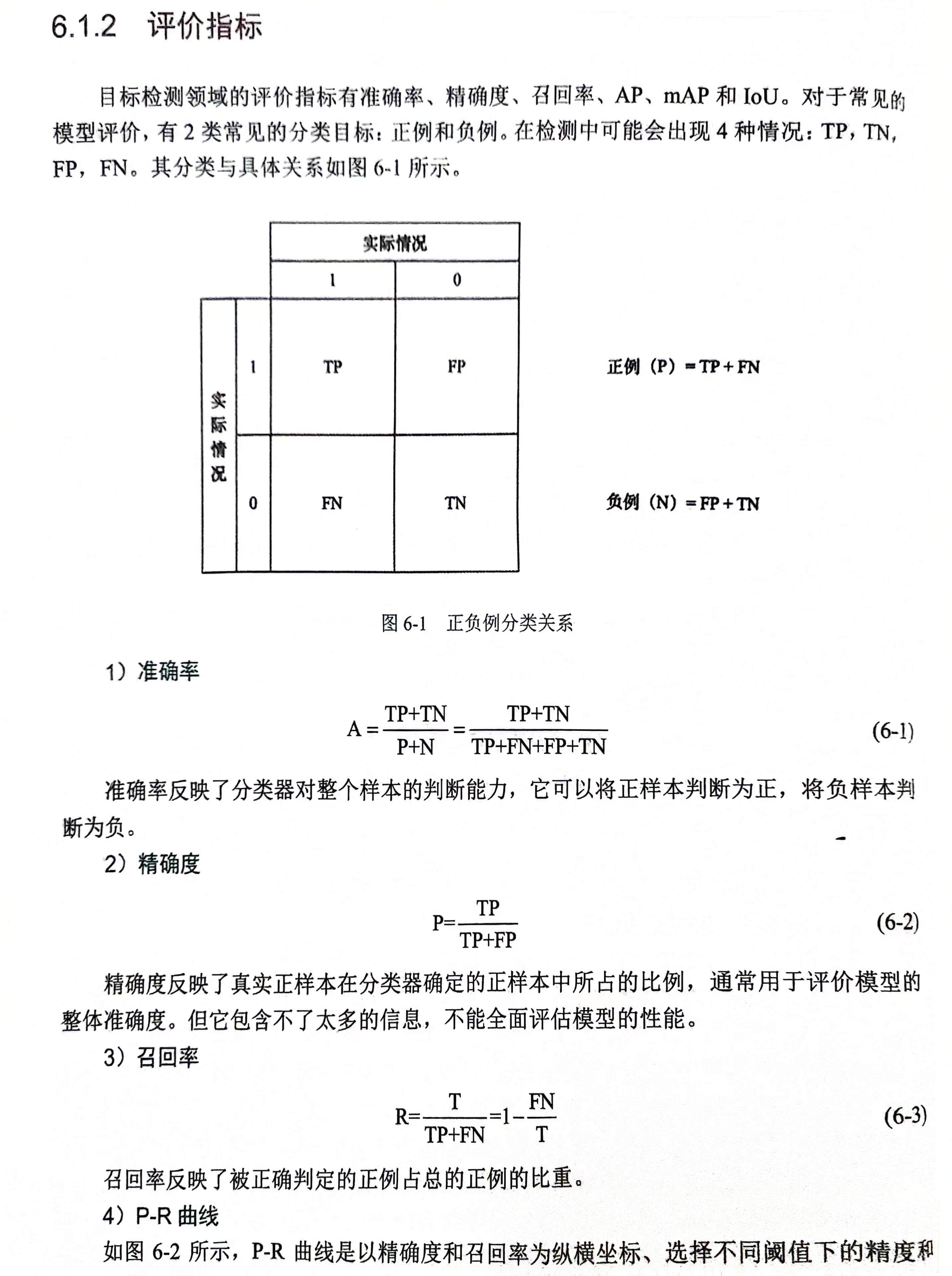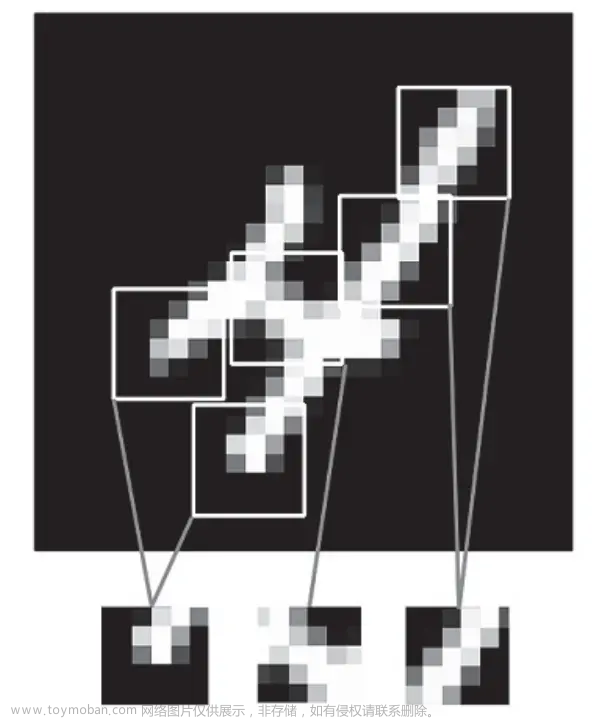1.背景介绍
计算机视觉是人工智能领域的一个重要分支,其主要研究如何让计算机理解和处理图像和视频。对象检测是计算机视觉中的一个重要任务,它旨在在图像中识别和定位特定类别的物体。随着深度学习技术的发展,对象检测技术也逐渐被深度学习所取代,这种方法在性能和准确性方面远超传统方法。本文将介绍深度学习在计算机视觉中的对象检测技术,包括其核心概念、算法原理、具体操作步骤、数学模型公式、代码实例和未来发展趋势。
2.核心概念与联系
在深度学习中,对象检测通常使用卷积神经网络(CNN)作为底层的特征提取器,然后将这些特征用于目标检测任务。深度学习对象检测的主要技术包括:
- 区域候选框(R-CNN):这是一个两阶段的对象检测方法,首先生成大量的区域候选框,然后将这些候选框的特征通过一个分类器进行分类和回归。
- Fast R-CNN:这是R-CNN的改进版本,通过将特征提取和候选框预测合并为一个网络,提高了检测速度。
- Faster R-CNN:这是Fast R-CNN的改进版本,通过引入区域候选网络(RPN)来自动生成候选框,进一步提高了检测速度和准确性。
- YOLO(You Only Look Once):这是一个一阶段的对象检测方法,通过将图像分为一定数量的网格单元,并在每个单元内进行目标检测,提高了检测速度。
- SSD(Single Shot MultiBox Detector):这是另一个一阶段的对象检测方法,通过在网络中引入多个输出层,实现不同尺度的目标检测。
3.核心算法原理和具体操作步骤以及数学模型公式详细讲解
3.1 R-CNN
R-CNN是一个两阶段的对象检测方法,其主要步骤如下:
- 使用卷积神经网络(例如VGG-16)对输入图像进行特征提取,得到的特征图大小为$W \times H \times D$,其中$W$、$H$是图像的宽和高,$D$是特征通道数。
- 生成大量的区域候选框,通常使用随机生成或者基于图像的边缘等方法。
- 对每个候选框的特征进行分类和回归,以确定候选框是否包含目标物体,以及目标物体的位置和尺寸。
R-CNN的分类和回归过程可以通过Softmax函数和回归函数实现。对于每个候选框$b$,我们可以定义一个分类向量$cb$,其中$c{b,i}$表示候选框$b$中物体的类别为$i$的概率。同时,我们可以定义一个回归向量$rb$,其中$r{b,j}$表示候选框$b$的中心点$(x,y)$和宽度$w$、高度$h$的偏移量。这些偏移量可以通过以下公式计算:
$$ x = x0 + \sum{j=1}^4 wj \deltaj $$
$$ y = y0 + \sum{j=1}^4 hj \deltaj $$
$$ w = w0 + \sum{j=1}^4 lj \deltaj $$
$$ h = h0 + \sum{j=1}^4 mj \deltaj $$
其中$(x0, y0, w0, h0)$是候选框的初始中心点和尺寸,$\deltaj$是第$j$个特征通道的激活值,$wj$、$hj$、$lj$、$m_j$是相应通道的偏移系数。
3.2 Fast R-CNN
Fast R-CNN通过将特征提取和候选框预测合并为一个网络,提高了检测速度。具体步骤如下:
- 使用卷积神经网络(例如VGG-16)对输入图像进行特征提取,得到的特征图大小为$W \times H \times D$。
- 使用一个卷积核将特征图分为多个区域,并为每个区域生成一个候选框。
- 对每个候选框的特征进行分类和回归,以确定候选框是否包含目标物体,以及目标物体的位置和尺寸。
Fast R-CNN的分类和回归过程与R-CNN相同。
3.3 Faster R-CNN
Faster R-CNN通过引入区域候选网络(RPN)来自动生成候选框,提高了检测速度和准确性。具体步骤如下:
- 使用卷积神经网络(例如VGG-16)对输入图像进行特征提取,得到的特征图大小为$W \times H \times D$。
- 使用区域候选网络(RPN)将特征图分为多个区域,并为每个区域生成一个候选框。
- 对每个候选框的特征进行分类和回归,以确定候选框是否包含目标物体,以及目标物体的位置和尺寸。
Faster R-CNN的分类和回归过程与R-CNN和Fast R-CNN相同。
3.4 YOLO
YOLO是一个一阶段的对象检测方法,具体步骤如下:
- 使用卷积神经网络对输入图像进行特征提取,得到的特征图大小为$W \times H \times D$。
- 将图像分为$S$个网格单元,每个单元包含$B$个绑定的候选框。
- 对每个网格单元,使用一个分类器和$K$个回归器进行目标检测,分类器用于确定单元中存在目标物体的类别,回归器用于确定目标物体的位置和尺寸。
YOLO的分类和回归过程可以通过Softmax函数和回归函数实现。对于每个网格单元$g$,我们可以定义一个分类向量$cg$,其中$c{g,i}$表示单元$g$中物体的类别为$i$的概率。同时,我们可以定义$K$个回归向量$r^kg$,其中$r^k{g,j}$表示单元$g$中物体的中心点$(x,y)$和宽度$w$、高度$h$的偏移量。这些偏移量可以通过以下公式计算:
$$ x = x0 + \sum{j=1}^4 wj \deltaj $$
$$ y = y0 + \sum{j=1}^4 hj \deltaj $$
$$ w = w0 + \sum{j=1}^4 lj \deltaj $$
$$ h = h0 + \sum{j=1}^4 mj \deltaj $$
其中$(x0, y0, w0, h0)$是单元$g$的初始中心点和尺寸,$\deltaj$是第$j$个特征通道的激活值,$wj$、$hj$、$lj$、$m_j$是相应通道的偏移系数。
3.5 SSD
SSD是另一个一阶段的对象检测方法,具体步骤如下:
- 使用卷积神经网络对输入图像进行特征提取,得到的特征图大小为$W \times H \times D$。
- 使用多个输出层将特征图分为多个区域,并为每个区域生成一个候选框。
- 对每个候选框的特征进行分类和回归,以确定候选框是否包含目标物体,以及目标物体的位置和尺寸。
SSD的分类和回归过程与YOLO相同。
4.具体代码实例和详细解释说明
在这里,我们将提供一个使用Python和TensorFlow实现的Faster R-CNN对象检测示例。首先,我们需要安装以下库:
pip install tensorflow pip install tensorflow-object-detection-api
接下来,我们可以从TensorFlow对象检测API中下载一个预训练的Faster R-CNN模型,例如SSD512:
git clone https://github.com/tensorflow/models.git cd models/research protoc object_detection/protos/*.proto -I. --python_out=. --grpc_out=.
然后,我们可以使用以下代码加载模型并进行对象检测:
```python import tensorflow as tf from objectdetection.utils import labelmaputil from objectdetection.utils import visualizationutils as vizutils
加载预训练的Faster R-CNN模型
modelpath = 'path/to/fasterrcnnresnet101v1coco.ckpt' detectiongraph = tf.Graph() with detectiongraph.asdefault(): odgraphdef = tf.compat.v1.GraphDef() with tf.io.gfile.GFile(modelpath, 'rb') as fid: serializedgraph = fid.read() odgraphdef.ParseFromString(serializedgraph) tf.importgraphdef(odgraph_def, name='')
sess = tf.compat.v1.Session(graph=detection_graph)
sess.run([tf.compat.v1.global_variables_initializer(),
tf.compat.v1.local_variables_initializer()])
tf.import_graph_def(od_graph_def, name='')加载类别名称和颜色
labelmappath = 'path/to/labelmap.pbtxt' categoryindex = labelmaputil.createcategoryindexfromlabelmap(labelmappath, usedisplayname=True) colormap = [(i, (random.getrandbits(8) % 255, random.getrandbits(8) % 255, random.getrandbits(8) % 255)) for i in categoryindex.keys()]
读取图像并进行对象检测
imagetensor = detectiongraph.gettensorbyname('imagetensor:0') detectionboxes = detectiongraph.gettensorbyname('detectionboxes:0') detectionscores = detectiongraph.gettensorbyname('detectionscores:0') detectionclasses = detectiongraph.gettensorbyname('detectionclasses:0') numdetectionclasses = detectiongraph.gettensorbyname('numdetectionclasses:0')
imagenp = np.expanddims(imagenp, axis=0) imagetensornp = detectiongraph.gettensorbyname('imagetensor:0') (boxes, scores, classes, numdetections) = sess.run( [detectionboxes, detectionscores, detectionclasses, numdetectionclasses], feeddict={imagetensor: imagetensornp})
绘制检测结果
vizboxes = vizutils.visualizeboxesandlabelsonimagearray( imagenp, np.squeeze(boxes), np.squeeze(classes).astype(np.int32), np.squeeze(scores), categoryindex, usenormalizedcoordinates=True, maxboxestodraw=200, minscorethresh=.30, agnosticmode=False)
plt.imshow(vizboxes) plt.colorbar(map=colormap) plt.show() ```
在这个示例中,我们使用了Faster R-CNN模型进行对象检测。首先,我们加载了预训练的模型和类别名称,然后读取了一张图像并将其转换为张量形式。接着,我们使用模型进行对象检测,并绘制检测结果。
5.未来发展趋势与挑战
深度学习在计算机视觉中的对象检测技术已经取得了显著的进展,但仍然存在一些挑战:
- 数据不足:对象检测需要大量的标注数据,但标注数据的收集和维护是一个耗时和费力的过程。
- 实时性能:虽然现有的对象检测方法在准确性方面表现良好,但在实时性能方面仍然存在提升空间。
- 模型复杂度:深度学习模型通常具有高的参数复杂度,这导致了计算开销和模型大小的问题。
- 泛化能力:深度学习模型在训练数据外部的泛化能力可能不佳,这可能导致在新的场景和任务中表现不佳。
未来的发展趋势包括:
- 自监督学习:通过使用无标注数据进行预训练,从而减少对标注数据的依赖。
- 零 shots对象检测:通过使用文本描述而不是图像标注来进行对象检测,从而扩展到新的类别。
- 模型压缩:通过使用知识蒸馏、量化等技术来减小模型大小,从而提高实时性能。
- 多模态学习:通过将计算机视觉与其他感知模态(如语音、触摸等)相结合,从而提高对象检测的准确性和泛化能力。
6.结论
深度学习在计算机视觉中的对象检测技术已经取得了显著的进展,并且在实际应用中得到了广泛的使用。在本文中,我们介绍了深度学习对象检测的主要技术和算法原理,并提供了一个具体的代码示例。未来的发展趋势和挑战包括数据不足、实时性能、模型复杂度和泛化能力等。为了解决这些挑战,未来的研究方向包括自监督学习、零 shots对象检测、模型压缩和多模态学习等。深度学习对象检测技术的不断发展和进步将为计算机视觉和人工智能领域带来更多的创新和应用。
参考文献
[1] Redmon, J., Farhadi, Y., & Zisserman, A. (2016). You Only Look Once: Unified, Real-Time Object Detection with Deep Learning. In CVPR.
[2] Ren, S., He, K., Girshick, R., & Sun, J. (2015). Faster R-CNN: Towards Real-Time Object Detection with Region Proposal Networks. In NIPS.
[3] Redmon, J., & Farhadi, Y. (2017). Yolo9000: Better, Faster, Stronger. In arXiv:1612.08215.
[4] Liu, A. D., Wang, M., Dollár, P., & Fei-Fei, L. (2016). SSd: Single Shot MultiBox Detector. In ECCV.
[5] Szegedy, C., Liu, F., Jia, Y., Sermanet, P., Reed, S., Angeloni, E., & Erhan, D. (2015). Going Deeper with Convolutions. In CVPR.
[6] Simonyan, K., & Zisserman, A. (2014). Very Deep Convolutional Networks for Large-Scale Image Recognition. In ILSVRC.
[7] Long, J., Gan, H., and Shelhamer, E. (2015). Fully Convolutional Networks for Semantic Segmentation. In CVPR.
[8] Lin, T., Deng, J., Murdock, J., He, K., and Sun, J. (2014). Microsoft coco: Common objects in context. In arXiv:1405.0312.
[9] Everingham, M., Van Gool, L., Williams, C. K. I., and Winn, J. (2010). The Pascal VOC 2010 Classification and Localization Challenge. In IJCV.
[10] Uijlings, A., Sra, P., Gevers, T., and Van Gool, L. (2013). Image Annotation with Scribble-like Interaction. In CVPR.
[11] Redmon, J., Farhadi, Y., & Zisserman, A. (2016). Instances of Things: Detecting Objects and Their Attributes with Deep Neural Networks. In ECCV.
[12] Ren, S., He, K., Girshick, R., & Sun, J. (2017). A Faster R-CNN for Object Detection with a Region Proposal Network. In NIPS.
[13] Redmon, J., Farhadi, Y., & Zisserman, A. (2016). Yolo: Real-Time Object Detection with Deep Learning. In arXiv:1506.02640.
[14] Redmon, J., Farhadi, Y., & Zisserman, A. (2017). Yolo9000: Better, Faster, Stronger. In arXiv:1612.08215.
[15] Liu, A. D., Wang, M., Dollár, P., & Fei-Fei, L. (2018). SSD: Single Shot MultiBox Detector. In arXiv:1612.08215.
[16] Lin, T., Deng, J., ImageNet: A Large-Scale Hierarchical Image Database. In CVPR.
[17] Redmon, J., Farhadi, Y., & Zisserman, A. (2016). You Only Look Once: Unified, Real-Time Object Detection with Deep Learning. In CVPR.
[18] Redmon, J., Farhadi, Y., & Zisserman, A. (2017). Yolo9000: Better, Faster, Stronger. In arXiv:1612.08215.
[19] Ren, S., He, K., Girshick, R., & Sun, J. (2015). Faster R-CNN: Towards Real-Time Object Detection with Region Proposal Networks. In NIPS.
[20] Redmon, J., & Farhadi, Y. (2017). Yolo9000: Better, Faster, Stronger. In arXiv:1612.08215.
[21] Liu, A. D., Wang, M., Dollár, P., & Fei-Fei, L. (2016). SSd: Single Shot MultiBox Detector. In ECCV.
[22] Szegedy, C., Liu, F., Jia, Y., Sermanet, P., Reed, S., Angeloni, E., & Erhan, D. (2015). Going Deeper with Convolutions. In CVPR.
[23] Simonyan, K., & Zisserman, A. (2014). Very Deep Convolutional Networks for Large-Scale Image Recognition. In ILSVRC.
[24] Long, J., Gan, H., and Shelhamer, E. (2015). Fully Convolutional Networks for Semantic Segmentation. In CVPR.
[25] Lin, T., Deng, J., Murdock, J., He, K., and Sun, J. (2014). Microsoft coco: Common objects in context. In arXiv:1405.0312.
[26] Everingham, M., Van Gool, L., Williams, C. K. I., and Winn, J. (2010). The Pascal VOC 2010 Classification and Localization Challenge. In IJCV.
[27] Uijlings, A., Sra, P., Gevers, T., and Van Gool, L. (2013). Image Annotation with Scribble-like Interaction. In CVPR.
[28] Redmon, J., Farhadi, Y., & Zisserman, A. (2016). Instances of Things: Detecting Objects and Their Attributes with Deep Neural Networks. In ECCV.
[29] Ren, S., He, K., Girshick, R., & Sun, J. (2017). A Faster R-CNN for Object Detection with a Region Proposal Network. In NIPS.
[30] Redmon, J., Farhadi, Y., & Zisserman, A. (2016). Yolo: Real-Time Object Detection with Deep Learning. In arXiv:1506.02640.
[31] Redmon, J., Farhadi, Y., & Zisserman, A. (2016). Yolo9000: Better, Faster, Stronger. In arXiv:1612.08215.
[32] Liu, A. D., Wang, M., Dollár, P., & Fei-Fei, L. (2018). SSD: Single Shot MultiBox Detector. In arXiv:1612.08215.
[33] Lin, T., Deng, J., ImageNet: A Large-Scale Hierarchical Image Database. In CVPR.
[34] Redmon, J., Farhadi, Y., & Zisserman, A. (2016). You Only Look Once: Unified, Real-Time Object Detection with Deep Learning. In CVPR.
[35] Redmon, J., & Farhadi, Y. (2017). Yolo9000: Better, Faster, Stronger. In arXiv:1612.08215.
[36] Ren, S., He, K., Girshick, R., & Sun, J. (2015). Faster R-CNN: Towards Real-Time Object Detection with Region Proposal Networks. In NIPS.
[37] Redmon, J., & Farhadi, Y. (2017). Yolo9000: Better, Faster, Stronger. In arXiv:1612.08215.
[38] Liu, A. D., Wang, M., Dollár, P., & Fei-Fei, L. (2016). SSd: Single Shot MultiBox Detector. In ECCV.
[39] Szegedy, C., Liu, F., Jia, Y., Sermanet, P., Reed, S., Angeloni, E., & Erhan, D. (2015). Going Deeper with Convolutions. In CVPR.
[40] Simonyan, K., & Zisserman, A. (2014). Very Deep Convolutional Networks for Large-Scale Image Recognition. In ILSVRC.
[41] Long, J., Gan, H., and Shelhamer, E. (2015). Fully Convolutional Networks for Semantic Segmentation. In CVPR.
[42] Lin, T., Deng, J., Murdock, J., He, K., and Sun, J. (2014). Microsoft coco: Common objects in context. In arXiv:1405.0312.
[43] Everingham, M., Van Gool, L., Williams, C. K. I., and Winn, J. (2010). The Pascal VOC 2010 Classification and Localization Challenge. In IJCV.
[44] Uijlings, A., Sra, P., Gevers, T., and Van Gool, L. (2013). Image Annotation with Scribble-like Interaction. In CVPR.
[45] Redmon, J., Farhadi, Y., & Zisserman, A. (2016). Instances of Things: Detecting Objects and Their Attributes with Deep Neural Networks. In ECCV.
[46] Ren, S., He, K., Girshick, R., & Sun, J. (2017). A Faster R-CNN for Object Detection with a Region Proposal Network. In NIPS.
[47] Redmon, J., Farhadi, Y., & Zisserman, A. (2016). Yolo: Real-Time Object Detection with Deep Learning. In arXiv:1506.02640.
[48] Redmon, J., Farhadi, Y., & Zisserman, A. (2016). Yolo9000: Better, Faster, Stronger. In arXiv:1612.08215.
[49] Liu, A. D., Wang, M., Dollár, P., & Fei-Fei, L. (2018). SSD: Single Shot MultiBox Detector. In arXiv:1612.08215.
[50] Lin, T., Deng, J., ImageNet: A Large-Scale Hierarchical Image Database. In CVPR.
[51] Redmon, J., Farhadi, Y., & Zisserman, A. (2016). You Only Look Once: Unified, Real-Time Object Detection with Deep Learning. In CVPR.
[52] Redmon, J., & Farhadi, Y. (2017). Yolo9000: Better, Faster, Stronger. In arXiv:1612.08215.
[53] Ren, S., He, K., Girshick, R., & Sun, J. (2015). Faster R-CNN: Towards Real-Time Object Detection with Region Proposal Networks. In NIPS.
[54] Redmon, J., & Farhadi, Y. (2017). Yolo9000: Better, Faster, Stronger. In arXiv:1612.08215.
[55] Liu, A. D., Wang, M., Dollár, P., & Fei-Fei, L. (2016). SSd: Single Shot MultiBox Detector. In ECCV.
[56] Szegedy, C., Liu, F., Jia, Y., Sermanet, P., Reed, S., Angeloni, E., & Erhan, D. (2015). Going Deeper with Convolutions. In CVPR.
[57] Simonyan, K., & Zisserman, A. (2014). Very Deep Convolutional Networks for Large-Scale Image Recognition. In ILSVRC.
[58] Long, J., Gan, H., and Shelhamer, E. (2015). Fully Convolutional Networks for Semantic Segmentation. In CVPR.
[59] Lin, T., Deng, J., Murdock, J., He, K., and Sun, J. (2014). Microsoft coco: Common objects in context. In arXiv:1405.0312.
[60] Everingham, M., Van Gool, L., Williams, C. K. I., and Winn, J. (2010). The Pascal VOC 2010 Classification and Localization Challenge. In IJCV.
[61] Uijlings, A., Sra, P., Gevers, T., and Van Gool, L. (2013). Image Annotation with Scribble-like Interaction. In CVPR.
[62] Redmon, J., Farhadi, Y., & Zisserman, A. (2016). Instances of Things: Detecting Objects and Their Attributes with Deep Neural Networks. In ECCV.
[63] Ren, S., He, K., Girshick, R., & Sun, J. (2017). A Faster R-CNN for Object Detection with a Region Proposal Network. In NIPS.
[64] Redmon, J., & Farhadi, Y. (2017). Yolo9000: Better, Faster, Stronger. In arXiv:1612.08215.
[65] Liu, A. D., Wang, M., Dollár, P., & Fei-Fei, L. (2016). SSd: Single Shot MultiBox Detector. In ECCV.文章来源:https://www.toymoban.com/news/detail-827203.html
[66] Szegedy, C., Liu, F., Jia, Y., Sermanet, P., Reed, S., Angeloni, E., & Erhan, D. (2015). Going De文章来源地址https://www.toymoban.com/news/detail-827203.html
到了这里,关于深度学习在计算机视觉中的对象检测技术的文章就介绍完了。如果您还想了解更多内容,请在右上角搜索TOY模板网以前的文章或继续浏览下面的相关文章,希望大家以后多多支持TOY模板网!











